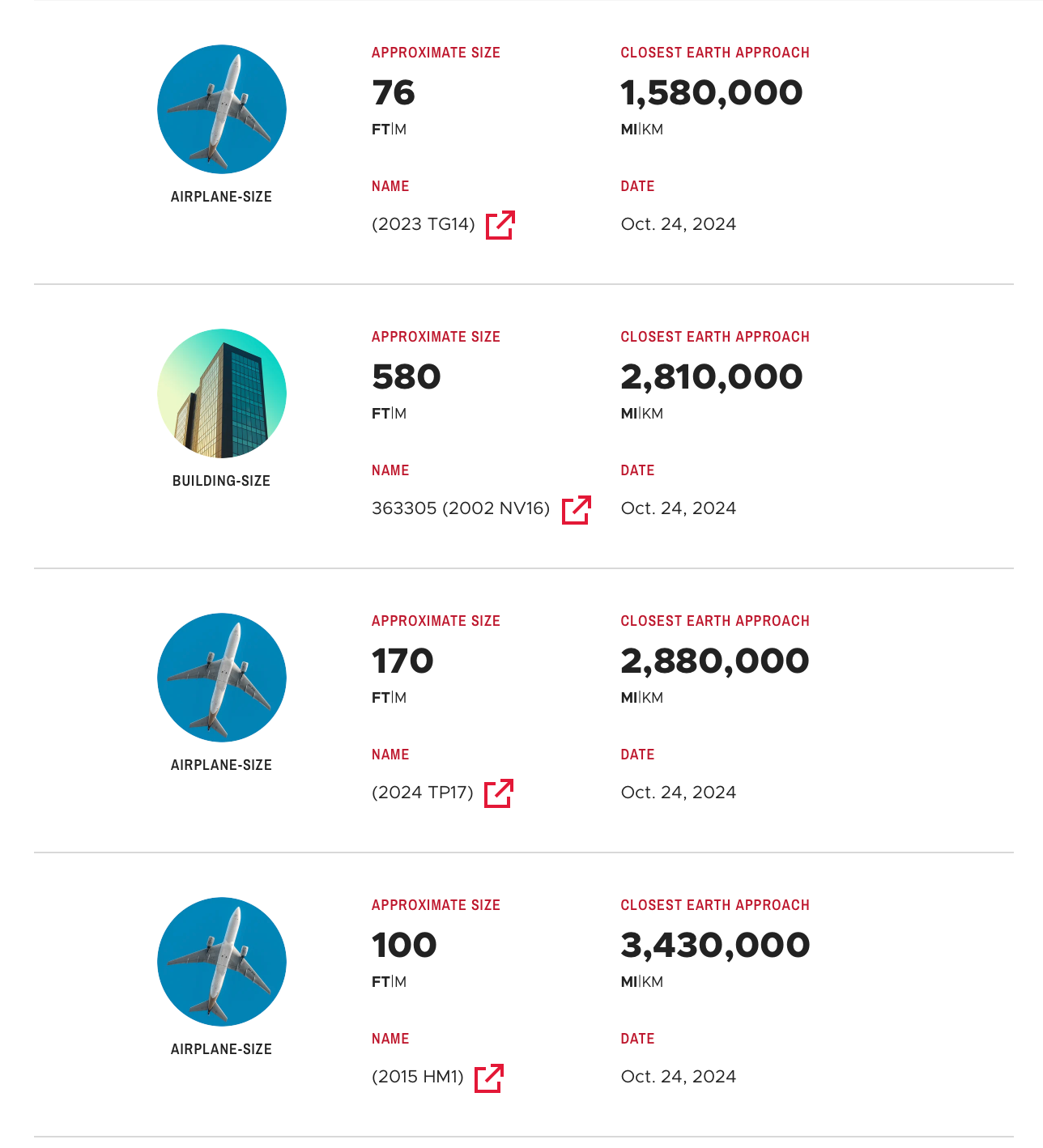Four large ‘potentially hazardous’ asteroids headed towards Earth – but it should be fine
Largest of the asteroids is about 580ft wide, Nasa says
Four large “potentially hazardous” asteroids – one the size of a skyscraper – are expected to pass by Earth on Thursday, astronomers say.
The asteroids range from 100ft to 580ft across, and two of these space rocks were only discovered earlier this month, according to Nasa’s asteroid watch dashboard.
The largest of them, dubbed 2002 NV16, is 580ft (177m) across and will reach a minimum distance of 4.5 million km (2.8 million miles) from Earth at around 3.50pm UTC.
While it does not pose any threat to Earth in its current passing, such large rocks are dubbed “city killers” for their potential to flatten entire towns with planet-wide effects.
Another of the space rocks named 2024 TR6, which is about 50m wide, will come within 5.6 million km (3.5 million miles) of the planet a few minutes later.

Of these asteroids, two of them – 2024 TR6 and 2024 TP17 – were only discovered earlier this month with the former first spotted on 7 October, and the latter on 12 October.
Nasa maintains a log of asteroids and comets that will make relatively close approaches to Earth in what it calls the Asteroid Watch dashboard.
It reveals the object’s approximate diameter, relative size, date of closest approach, and distance from Earth for each of these encounters.
Some of these asteroids have been categorised as “potentially hazardous” by the dashboard.
This is a label given to space rocks larger than about 150m, whose orbits around the sun bring them within about 48 million km (30 million miles) of Earth.

For comparison, the average distance between the Earth and the moon is about 385,000km (239,000 miles).
So far, about 25,000 large asteroids have been discovered as potential “city killers”.
But recent estimations of the paths taken by these asteroids suggest none of them pose any threat to the planet for another 100 years.
However, there have also been close encounters Earth has had with asteroids discovered just days before their predicted pass by.
There are also some instances where space rocks were first detected only hours before they entered the planet’s atmosphere.
Governments are working to spot potentially hazardous space rocks early.
The ESA’s Neomir observatory to launch in 2030 would circle between the Sun and the Earth, and provide an early warning on such asteroids.
Join our commenting forum
Join thought-provoking conversations, follow other Independent readers and see their replies
Comments
Bookmark popover
Removed from bookmarks